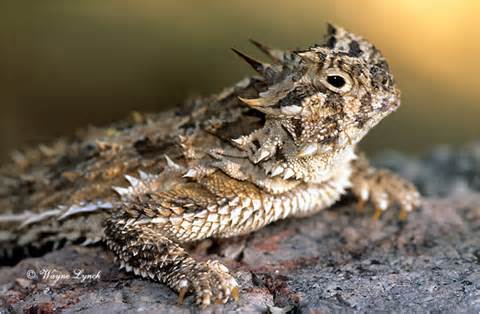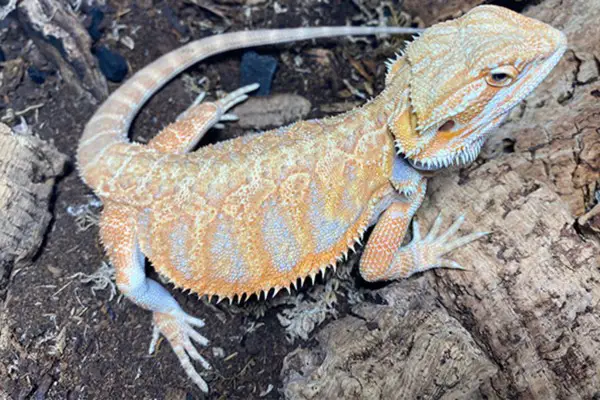The common basilisk (Basiliscus basiliscus) is one of the most familiar lizards in Central America. There is a prominent crest on its head and back that separates it from the rest of lizard species. The common basilisk is an expert climber and swimmer but it is known for running bipedally on the water surface—probably the only reptile to do so. The lizard is also called the ‘Jesus lizard’.
Basilisk Lizard Facts
Anatomy
- The common basilisk is recognized not only by its large size but also by the fin-like crests that runs along its back.
- The basilisk’s color is mostly olive to olive-brown but sometimes it shows bright green.
- Young basilisks are thought to display vivid body with three prominent stripes on its throat.
- Males are generally larger than the females.
- The total length from snout to vent is about 203 mm with the overall length measuring up to 430 – 800 mm. It has 800 mm long tail which makes up 75% of the lizard’s entire body length.
- Adult males grow up to 130-250 mm in its length from snout to vent. They are mostly 900 mm long. The snout-vent length of adult females is about 135-194 mm.
- Males are 600 g in weight while females averaging 300 g.
- The average weight of basilisk lizard measures about 200 – 500 grams.
- Male basilisks are likely to show larger crests as compared to the females.
- They have large brownish eyes.
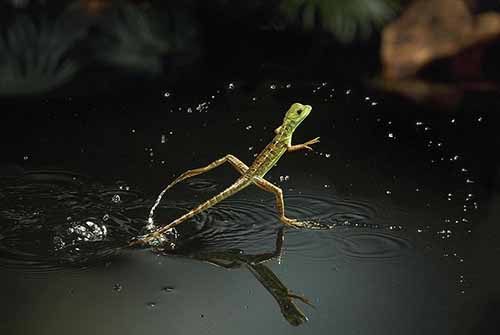

Common Basilisk Habitat & Range
- Common basilisks make homes in the lowland forests of the Costa Rica as well as occurring in the Pacific forests of Central America. The basilisk’s habitats are found at elevations as low as 0 m or to as high as 600 m.
- They like to live in the tropical and riparian forests that are abundant in rivers, streams, lakes, and ponds. Basilisks occupy riverbank habitats as well as Guanacaste dry forest and the wetlands of the southwestern Costa Rica.
- Basilisks spend much of their daylight hours on the ground while at night they sleep in perches which are 20 meters high.
- The common basilisk is arboreal and aquatic species because it neither remains into the trees nor in water for a longer time.
Basilisk Adaptation & Behavior
- Common basilisks have sharp eyesight. They remain active during the day while overhanging the water from vegetation. Most of the time is spend near water.
- Basilisks are as fast runners over the water surface as they are on the ground. For them there is no difference between the two surfaces. They run on two legs just like we do!
- They spend night on branches that may or may not be hanging over the water. But if they fall into the water basilisks run more than 50 feet to swim to the side of the stream.
- Basilisks are not only good runners but they’re also great swimmers as they remain submerged in water for many hours.
- While running on two legs, the common basilisk maintains balance with its tail. Heavier adults however fail to run as fast as young do. Thanks to these legs with the help of which they are able to escape aquatic predators.
- The speed of the common basilisk is around 7 mph (11 km/h) on ground however on water the average speed is 8.4 km/h (or 5.2 mph).
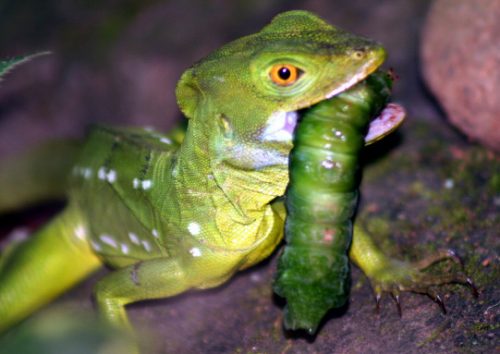
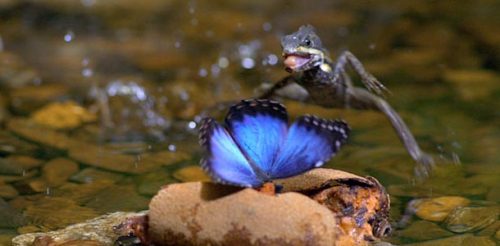
Feeding Ecology & Diet
- Common basilisks have an omnivorous diet. They are likely to eat snakes, freshwater shrimps, lizards, crabs, frogs, and arthropods. The basilisk also consumes flowers and fruits, alongside birds and small mammals. Young rely on small insects and fish.
- The common basilisk’s diet also includes aquatic crustaceans, fish, non-insect arthropods, fish, reptiles, and small birds.
- Basilisks are typically opportunistic hunters in that they consume anything anywhere ranging from beetles or ants to the hummingbirds.
Reproductive Biology
- Female basilisks are likely to become mature earlier than males. Males attain maturity when they reach a length of about 135 mm while females in 131 mm at the age of 20 months. Males become mature when they are 2 years of age.
- The maximum lifespan of common basilisks is about 7 years in the wild and 9 years in captivity. The wild lizards have a typical lifespan of 4 – 6 years in the wild.
- The breeding season occurs in March but females will lay eggs in the coming January after a gestation period of 2 – 3 months.
- There are 2 – 18 eggs in a single clutch. The female produces 5 – 8 clutches per season. The basilisk’s eggs measure 24 × 13 mm.
- Hatchlings weigh only 2 grams with the length averaging 37 – 43 mm.
- Predators of common basilisks include large snakes, birds of prey, white-nosed coatis, caracaras, and opossums. Young basilisks fall prey to whiptail lizard, fish, turtles, and snakes.



